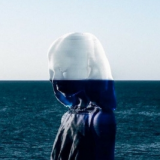Thanks to everyone at Narrative2019 – inspiring three days in Pamplona! Wide array of narrative research from different parts of the globe, lots of interesting talks, good discussions over coffee. I presented on what I call ”fraught fictionality” – the use of fictional elements in non-literary future narratives. Part of my broader project on future narratives of cities at the water in planning and fiction – more here. Hope to be able to make it to Narrative2020 in New Orleans next year!
Category Archives: Yleinen
“Governing the Future: Perspectives from literary studies” in Fennia
For the latest issue of Fennia, I wrote a reflection article about “Governing the future: perspectives from literary studies”, as a commentary to Rhys Jones’s article “Governing the future and the search for spatial justice: Wales’ Well-being of Future Generations Act.”
Part of my current research project on genres of future storytelling in the context of cities at the water.
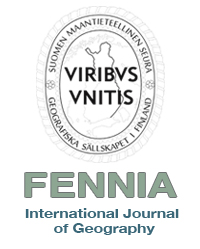
Abstract:
“Taking its cue from Rhys Jones’s article “Governing the future and the search for spatial justice: Wales’ Well-being of Future Generations Act”, this commentary reflects on some of the challenges attached to attempts to govern the future. It proposes perspectives from literature and literary studies to enrich how we imagine the future. This commentary maps out how literary fiction and other forms of future storytelling associated with qualia – the “how it feels” of future possible worlds – may provide an important complementary to other, more distancing, modes of envisioning the future.”
From the article:
“… : what can fictional texts contribute to our thinking of the future? The example of Bellamy’s Looking Backward, a literary novel that in its time was influential within urban planning and policy, provides one obvious reference, illustrating how utopian literature, nineteenth-century scientific romance, or science fiction can posit alternative societies. But literary fiction, in its various forms, has always been concerned with counterfactuality – with imagining the not-yet; with juxtaposing different possible worlds and with considering possible futures, from small-scale deliberations about whom to marry (the famous dilemma of Rastignac, in Balzac’s Le Père Goriot [1835]), to momentous changes in world history (such as in Dick’s The Man in the High Castle [1962]). Westphal (2007, 59, 63), in Geocriticism, considers literature as “experimental field of alternative realities,” and a “laboratory of the possible”. More generally, literature does not only describe possibilities, it is arguably also about extending an awareness of the possible into the world of the reader, providing readers with an expanded sense of possibility (Meretoja 2017). Literary studies has in turn long developed methods and frameworks to speak of possible worlds, also in relation to future possibilities (see Ameel & Neuvonen 2016).”
Source:
Lieven Ameel. “Governing the future: perspectives from literary studies – commentary to Jones.” In Fennia 197/1, 2019, 145–148. OA link
Thursday 25 April in Ghent: “Peopling the Future City – Embedded and Embodied Futures in Planning, Policy, and Fiction”
This Thursday April 25, 2019 at the Ghent University: “Peopling the Future City: Embedded and Embodied Futures in Planning, Policy, and Fiction”, in collaboration with NARMESH.
16:00-17:30, Blandijn, second floor, room 120.025.
Thanks to Marco Caracciolo and everyone at NARMESH for the invitation.
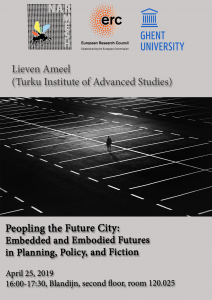
I’ll be talking about my current research project, in which I examine how different kinds of textual genres, from literary fiction to planning and policy texts, imagine future cities at the water and the possibilities to act towards particular futures, and how they differ in imagining a sense of agency now and in the future.
Literary fiction provides more in the way of qualia, more of a sense of how it feels to be in a particular (future, or speculative) world, than most planning of policy texts set in the same future cities. But how exactly are these experiential, fictional elements situated within the texts, and what meanings do they convey?
One key differentiation that interests me in these different kinds of text is the difference between a panoramic, aestheticizing perspective, and a more grounded, embodied experience.
A second, largely aligned differentiation, is the one between an emptying perspective of the future as field of empty possibility, and the perspective of a future as already in part locked in, and inhabited by embodied and embedded beings within future presents.
While it could be assumed that such differentiations are aligned with the [literary fiction] / [non-fiction; planning & policy] divide, this is not exactly the case, and I examine also planning and policy texts that incorporate fictional elements, as well as fictional texts with a strong emphasis on panoramic perspectives and narrative strategies that in effect empty the future.
In focusing on situated, embedded and embodied experiences of the future, I am indebted to Future Matters (2007) by Barbara Adam and Chris Groves, in which the authors warn against an “emptying of the future” (2), in which the future is “emptied of content and extracted from historical context” (13). They emphasize the importance of approaching the future not in terms of “present futures” – “futures that are imagined, planned, projected, and produced in and for the present” (28), but rather by way of “future presents”, a future that is already partly locked in by our current actions, and peopled with embedded and embodied presents we have the duty to imagine.
Adam and Groves foreground the importance of traditional forms of divination and imaginative methods from futures studies that would allow a focus on “future presents”. Literary fiction can be seen as one important complementary resource for imagining future presents. It has long been emphasized to be crucially about providing readers with qualia – about “how it feels like” to be in a particular, embodied and embedded situation. When so many of the dominant perspectives with which futures are currently imagined take a distancing view, with an emphasis on numbers and quantitative data, on abstract diagrams and on panoramic views of future flood plans or future ice sheet extension, literary resources may allow access to the exact opposite: a sense of what it feels like to be within a situated future present, embedded within particular context and tied to embodied experiences.
Some of my recent articles that are engaged with such questions include “Agency at / in the waterfront in New York City: Vision 2020 and New York 2140” in Textual Practice, and the forthcoming “Governing the Future: Perspectives from Literary Studies”, a reflection paper in the geography journal Fennia (the two previous paragraphs are part of that Fennia paper).
Teaching “Open City” today; palimpsest, multiple temporal layers, and the city
Teaching Teju Cole’s Open City today as part of my course ”Topics in Post-45 American Literature – Futures of New York City in Contemporary American Literature” at the KU Leuven. The aim of the course is to provide students with the concepts and theoretical frameworks to explore the (often contradictory) meanings of 21st century literature of New York City, with specific reference to future-oriented literature. In the previous lecture, we discussed Odds Against Tomorrow together with theoretical texts from futures studies. Today, Open City will be approached with the help of the key concept “palimpsest” and with some reading from Burton Pike’s The Image of the City in Modern Literature. The idea is to ground readings by the students in a broader awareness of how different temporal scales tend to function within literature of the city, before moving into reflections on how future (or possible) worlds are hinted at in Open City.
I’ve published on Open City in other contexts (see my article > “Reading Signs of Uncertain Times in New York and Brussels” [pdf]), and this lecture as well as the whole course are part of my current research project on future visions of cities at the water. Looking forward to discussing the different angles of my research with the students today.
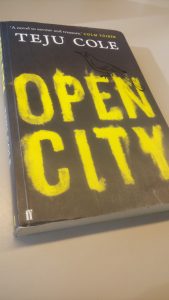
Source:
Ameel, Lieven. “Open City: Reading Signs of Uncertain Times in New York and Brussels.” In Polvinen, Merja; Salenius, Maria & Sklar, Howard (eds.): Mielikuvituksen maailmat / Fantasins världar / Worlds of Imagination. Turku: Eetos, 2017, 290-308.
In Essen, Germany, for work with the Scripts Group
I’m in Essen, Germany, at the University of Duisburg-Essen for a session with the Scripts Group – a group of scholars working on transatlantic narratives of cities, city cultures, and urban planning. Very much aligned with some of my work on applying methods from narrative and literary studies to urban planning. Fascinating array of research projects, sources and methods.
Topics include narratives of urban waterfront development, trivial pursuits in postindustrial environments, counter-discourses in cultural scenes, narratives of sustainable and climate-friendly rehabilitation, and more – and most projects with a transatlantic perspective, with focus on US cities and German post-industrial urban regions.
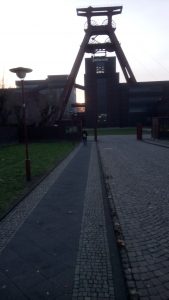
[Zollverein, Essen]
Thanks to prof. Jens Gurr and prof. Barbara Buchenau for the invitation and the warm reception – and for all their good work on the scripts group.
Greetings from the KU Leuven!
Greetings from Leuven! From the beginning of 2019, I’m working at the KU Leuven, Belgium, for a six-month stay as Visiting Professor at the Department of Literature. The extended research stay is made possible by TIAS and the generous hospitality of the KU Leuven, who also assisted in providing housing. Thanks, in particular, to Pieter Vermeulen from English Literature.

(The beautiful Groot Begijnhof, where we’re staying; founded in the 13th c, most buildings from the 17th c)
I’m excited to learn more about the work being done at the Department of Literature – and beyond. At the KUL, Pieter Vermeulen’s work on contemporary American literature aligns well with many of my own research interests (ao. his work on Teju Cole and within the environmental humanities); Bart Vervaeck’s books on journey’s to the netherworld (Literaire Hellevaarten) and Handbook of Narrative Analysis (with L. Herman) have been an inspiration; and there’s plenty of new research I’ll be getting acquainted with. Very much looking forward to be able to present my current research about narrating futures of cities at the water and to focus on my research project during this time. And really excited, also, about the course I’ll teach starting from February – “Topics in Post-45 American Literature“, with a specific focus on “Futures of New York City in Contemporary American Literature”. An opportunity to test and discuss some of my ongoing research, in particular dealing with novels such as Kim Stanley Robinson’s New York 2140, Jonathan Lethem’s Chronic City, Teju Cole’s Open City,Nathaniel Rich’s Odds Against Tomorrow, and Ben Lerner’s 10:04.
A return to Belgium after 20 years in Finland also provides the possibility to reconnect with friends, family, old colleagues; as well as with my mother-tongue and with literature and research written in Dutch. I hope to make the best of good train connections to also meet up with colleagues in the Netherlands, Germany, the UK, with a first planned visit to the University of Duisburg-Essen in February.
Tuomainen’s “The Healer” in the new Reader in Climate Fiction
The last few days of 2018 saw the appearance of a timely Cli-Fi – A Reader, edited by Adeline Johns-Putra and Axel Goodbody, and including my introductory article on Antti Tuomainen’s The Healer (Parantaja). Contributors to the Reader were encouraged to include reflections on how the novels in question can be used in teaching; the past few years I have taught several courses that included The Healer and from my experiences, this is a novel that opens up a range of perspectives for teaching climate fiction, but also beyond, and including questions in literary urban studies (how is the future city linked to Helsinki’s urban planning visions?) and literary genre studies (is the novel cli-fi, Scandinavian noir, a crime novel?). The Healer is widely translated; hopefully this article will be beneficial also for classrooms and researchers outside of Northern Europe in examining contemporary climate fiction outside of the narrow current Anglo-Saxon canon.
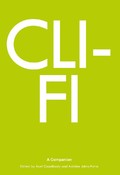
From the article:
Introduction:
“Antti Tuomainen’s Parantaja [The Healer], published in 2010, is set in a near-future Helsinki where climate change is wreaking havoc both in the Finnish capital and abroad. Incessant rains and floods are the most visible climate change-related curses in Tuomainen’s Helsinki, but there is also news of global pandemics, destructive forest fires and water wars. Society is breaking down, and amidst the radical upheaval, a serial killer, the eponymous ‘Healer’ – the ‘healer for a sick planet’ – is murdering people he holds responsible for accelerating climate change. The plot revolves around the endeavours of the protagonist, the Finnish poet Tapani Lehtinen, to find his lost wife Johanna, who is a journalist investigating the murders. As Tapani learns more about the mysterious Healer, he also discovers about the past of his wife, who turns out to have known the Healer intimately. In his journey through flooded Helsinki, Tapani guides the reader on a tour of how different areas in the city, as well as different affected citizens, are coping with the dramatic changes.”
perspectives for teaching:
“One possibility would be to approach the novel in terms of its reception and genre, with a specific focus on how the novel’s implications for climate change depend on the generic prism with which it is approached – Nordic noir or crime fiction; dystopia or climate fiction? A discussion of The Healer in tandem with other Finnish dystopian novels, or as a part of a selection of Nordic speculative fiction, would attune students also to the importance of the cultural and historical specificity of literary responses to climate change outside of the English-speaking world. As a novel set in a recognizable real-world setting, the novel could also be integrated in courses that examine the interaction between fictional texts and urban planning narratives. A last approach would be to examine the novel as part of a course on representations of agency and responsibility in climate fiction. Who is held responsible in this novel for catastrophic climate change, and what room is there for mitigating strategies? Given the role played by climate terrorism in the novel, The Healer could also provide insights in changing (and often genre- and culture-specific) depictions of ecological terrorists.”
From the conclusion:
“The Healer plays on the fear of the future in dystopian and apocalyptic scenarios. Rather than offering concrete insights into the dynamics and the possible effects of climate change, it presents a chilling rendering of what it feels like to live in a society disrupted by radical climate change. The presence of recognizable and everyday environments being turned into war zones, such as the iconic Stockmann department store in central Helsinki during Christmas shopping period, is particularly gripping.”
Source:
“Antti Tuomainen: The Healer.” In Johns-Putra, Adeline & Goodbody, Axel (eds.): Reader in Climate Fiction. Oxford: Peter Lang, 2018, 165-170.
Balloon explorers, the panorama, and the making of an Arctic nomos
Thanks to everyone at last week’s “Water, Animals, and Arctic Climate Change” conference in Joensuu, 12-13 December 2018 (pdf programme here). Special thanks to Markku Lehtimäki and Arja Rosenholm of the Changing Environment of the North project, all the organizers at Joensuu, and Scott Slovic for an inspiring keynote and feedback on the presentations.
lieven.ameel@utu.fi
In this presentation, I will explore the trope of the balloon explorer in Kim Stanley Robinson’s New York 2140 (2017), with a specific reference to Carl Schmitt’s idea of nomos (as proposed in The Nomos of the Earth (1950/2003), and drawing on the idea of visual agency. How does the balloon paronama, and the panoramic visual agency over the Arctic expanse tie in with the process of appropriation, distribution, and production involved in the construction of a nomos of the arctic? What kinds of mastery, and epistemological order, does the balloon panorama attempt? I will focus on Robinson’s futuristic novel, but will also draw on Philip Pullmans’s His Dark Materials, and Thomas Pynchon’s Against the Day, literary texts that utilize complex strategies of imaginative worldmaking that involve arctic balloon exploration as a way of assessing new kinds of knowledge of humans’ relationships to their environment, but also as means of territorial and epistemological control.
picture source: https://blogs.uef.fi/cen-aqua/events/
Reading Vis second- and third-hand
The Croatian island of Vis, and the fishers’ village of Komiza, are a thoroughly inspiring setting for a conference on wavescapes in literature and culture. As always, experiences of space are in part already mediated by contact with earlier stories – so a few (admittedly random, and entirely personal) thoughts on my earlier, non-bodily encounters with Vis:
I was introduced to the island of Vis as a child overhearing talk of my grandmother’s brother’s exploits during the Second World War. The family had escaped Ostend to England at the beginning of the war and my great-uncle Pierre Beauprez had enlisted in the British army, in what would become the legendary no. 10 inter-allied commando of the SAS forces, consisting of soldiers that had fled occupied Europe. 3rd troop of 10 i-a commando would form the loose inspiration for Tarantino’s movie Inglorious Bastards. 4th troop was the Belgian troop, and saw Pierre Beauprez in action in ao. Italy, Walcheren, and Vis. He would survive the war, later enlist in the Korean war, where he died in action in 1951.
Pierre Beauprez
source: http://hmc2.pagesperso-orange.fr/en/spotl/korpersonalia.html
And it was again the events of war that brought me in contact with Vis later – this time the 1930 and 1940s memoirs of Fitzroy Maclean Eastern Approaches. Maclean, who acted at one point as British liaison officer with Tito’s partisans, describes the idyllic environments of the island being leveled by the Allied forces to make way for air bases to support the partisans. In fact I always found the most gripping parts of Maclean’s book the chapters that deal with his time in Russia, in particular his first-hand witnessing of Stalin’s purges and his explorations of Central Asia, which conveyed an urgent desire to “take the golden road to Samarkand” (to quote Mika Waltari, Hagar Olsson, James Elroy Flecker, and Maclean’s A person from England all in one).
The most impressive, and most recent, exposure to Vis, and to Komiza, came by way of Olga Tokarczuk‘s book Flights, translated by Jennifer Croft, which recently won the Man Booker International. It’s one of the most memorable books I read recently (although unfortunately I’m not able to read it in its original Polish). I found the scenes set on Vis and Komiza – a fuga-like, ever-returning bead of stories telling of small-scale marital tragedy – particularly haunting.
Narrative Responses to rising waters – presentation at Wavescapes conference in Split/Vis, Croatia
Presenting my research at the Wavescapes conference in Split and Komiža (island of Vis), Croatia.
I changed around the topic of my talk a bit, and eventually examined fictional responses to rising waters in Let me be frank with you, Odds against tomorrow, and New York 2140. More on that research here.
Fascinating range of perspectives, including presentations on art practice, conservation, ecological thinking, waterscapes in particular national cultures as well as across national borders.
One session that resonated particularly well with some of my own research interests was a panel that featured Christina Heflin, who spoke of “Surrealism, Marine Life and Non-Ocular Modes of Sensing” in interbellum French surrealist underwater movies; Srećko Jurišić, who presented on “Amphibian Humanoids of the Mediterranean” in movie; and Eni Buljubašić on “The Adriatic monk seal in Croatian Narratives”.
Other fascinating talks including a presentation on a walk along “the zero meter altitude line into the hypothetical new coast line of the Netherlands”, a project by Maud Canisius; Killian Quigley’s presentation on the “Seascape and the Future of Land: Aesthetics, Ethics, and the Anthropocene”; and the keynotes, ranging from Adeline Johns Putra’s on “The shapes of water in climate fiction” to Rebecca Giggs’s on narrative non-fiction of the whale, and Joško Božanić’s considerations of practices and words in the eastern Adriatic archipelago.




